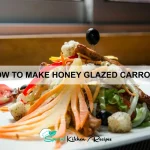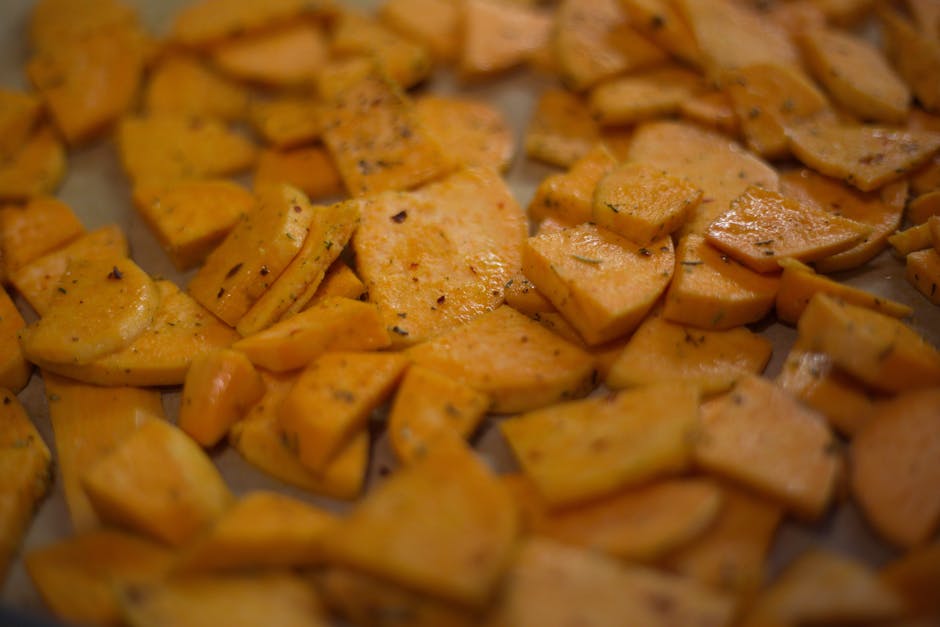The humble potato, Solanum tuberosum, has a surprisingly rich and complex history, far exceeding its reputation as a simple side dish. Originating in the Andes Mountains of South America, potatoes were cultivated for thousands of years by indigenous populations before their introduction to Europe in the 16th century. Initially met with suspicion, potatoes gradually gained acceptance, becoming a dietary staple across the globe. Today, potatoes are the world’s fourth-largest food crop, with an estimated 370 million tons produced annually, underscoring their enduring importance in global food security.
Mashed potatoes, a beloved comfort food in countless cultures, represent a simple yet effective transformation of this versatile tuber. While the precise origin of mashed potatoes is difficult to pinpoint, their popularity exploded alongside the potato’s rise to prominence. Early recipes often involved simply boiling and mashing the potatoes, perhaps with a bit of butter or milk. However, the evolution of mashed potatoes has seen countless variations emerge, reflecting regional preferences and culinary innovation. The addition of roasted garlic, for example, elevates the dish to a new level of savory complexity, adding a depth of flavor that complements the creamy texture perfectly.
Roasted garlic mashed potatoes, specifically, represent a modern twist on a classic. The roasting process mellows the garlic’s sharp bite, transforming it into a sweet and subtly pungent flavor enhancer. This technique, while perhaps not ancient, reflects a broader culinary trend towards maximizing flavor through careful preparation and highlighting natural ingredients. The internet is rife with variations of this recipe, highlighting its current popularity, with countless blogs and websites offering their own unique take on this comforting dish. Its appeal lies not only in its deliciousness but also in its versatility; it pairs beautifully with roasts, grilled meats, and even as a standalone side.
This recipe aims to guide you through creating perfect roasted garlic mashed potatoes, focusing on techniques to achieve the ideal balance of creamy texture and robust garlic flavor. We will explore the best types of potatoes to use, the optimal roasting time for the garlic, and the secrets to achieving that unbelievably smooth and dreamy consistency. Get ready to experience the magic of roasted garlic mashed potatoes – a dish that transcends its simplicity to become a culinary masterpiece.
Ingredients and Measurements
The success of creamy, flavorful roasted garlic mashed potatoes hinges on using high-quality ingredients and precise measurements. Don’t skimp on the good stuff! Here’s a breakdown of what you’ll need for a batch that serves approximately 6-8 people:
Potatoes: 2 pounds of russet potatoes are ideal. Russets, with their high starch content, create the fluffiest mash. Yukon Golds can be substituted for a slightly creamier, less fluffy texture, but adjust the liquid accordingly as they tend to have more moisture. Ensure your potatoes are firm and free from blemishes. Avoid using potatoes that are sprouting or have green patches, as these indicate they may be past their prime.
Garlic: 1 whole head of garlic. Roasting the garlic mellows its flavor, creating a sweet and subtly pungent note that perfectly complements the potatoes. Don’t rush the roasting process; properly roasted garlic will be soft and deeply caramelized. If you’re short on time, you can use about 4-6 cloves of raw garlic, but the flavor will be significantly different.
Butter: 1/2 cup (1 stick) of unsalted butter. Unsalted butter allows you to control the saltiness of the final dish. Use high-quality butter for the best flavor. Consider using European-style butter for a richer, more complex taste.
Milk or Cream: 1/2 cup of whole milk or heavy cream. Whole milk provides a lighter, slightly less rich mash, while heavy cream delivers a luxuriously decadent texture. You can adjust the amount of liquid depending on your desired consistency; start with less and add more as needed. Alternatively, you can use a combination of milk and cream for a balance of richness and lightness.
Salt and Pepper: 1 teaspoon of kosher salt and 1/2 teaspoon of freshly ground black pepper. Salt is crucial for enhancing the flavors of the potatoes. Start with the suggested amount and taste before adding more. Freshly ground black pepper adds a subtle spice that complements the garlic and butter beautifully. Adjust to your preference.
Optional additions: For extra flavor, consider adding 1-2 tablespoons of finely chopped fresh chives or parsley before serving, or a dash of nutmeg for a warm, savory note. A sprinkle of grated Parmesan cheese can also elevate the dish to new heights. Experiment with different herbs and spices to create your own signature mashed potato recipe.
Equipment List
Creating perfectly creamy and flavorful roasted garlic mashed potatoes requires the right tools. This equipment list details everything you’ll need, from preparation to serving, ensuring a smooth and efficient cooking process. Don’t skip out on the essentials; the quality of your equipment can significantly impact the final result.
Large Baking Dish (9×13 inch or similar): This is crucial for roasting the garlic. A smaller dish might overcrowd the garlic heads, leading to uneven roasting. A glass or ceramic dish is preferred for even heat distribution. Avoid using a metal baking dish as it can sometimes lead to the garlic browning too quickly on the outside before the cloves are properly softened.
Aluminum Foil: Using aluminum foil to wrap the garlic heads helps retain moisture and ensures even roasting. A standard roll of aluminum foil will suffice; you’ll need approximately 12-18 inches, depending on the size of your baking dish.
Chef’s Knife: A sharp chef’s knife (approximately 8-inch blade) is essential for trimming the tops of the garlic heads and later for easily slicing the roasted garlic cloves. A dull knife will make the process more difficult and may lead to uneven cuts.
Large Pot (at least 6-quart): You’ll need a large pot for boiling the potatoes. Ensure the pot is large enough to comfortably hold the potatoes without overcrowding, allowing them to cook evenly. A stainless steel or heavy-bottomed pot is recommended for better heat distribution and even boiling.
Potato Ricer or Masher: A potato ricer is highly recommended for creating exceptionally smooth and creamy mashed potatoes. It separates the potato fibers, resulting in a lighter texture. If you don’t have a ricer, a sturdy potato masher will work, but expect a slightly coarser texture. Avoid using an immersion blender; it can over-process the potatoes, leading to a gummy consistency.
Measuring Cups and Spoons: Accurate measurements are key to achieving the desired flavor and consistency. Having a set of measuring cups and spoons will ensure you use the correct amount of ingredients.
Wooden Spoon or Spatula: A sturdy wooden spoon or spatula is perfect for stirring the mashed potatoes and incorporating the other ingredients. Avoid using metal utensils, as they can react with the potatoes and slightly discolor them.
Serving Bowl: A large serving bowl is needed to present your delicious roasted garlic mashed potatoes. Choose a bowl that complements your serving style and table setting.
Prepping the Garlic
The key to incredibly flavorful roasted garlic mashed potatoes lies in properly preparing the garlic. We’ll be roasting a whole head, which mellows the garlic’s pungency and brings out its natural sweetness. This method requires a bit of patience but is well worth the effort.
Begin by selecting a large head of garlic, aiming for one with plump, firm cloves and no signs of sprouting. Avoid using garlic that’s soft or showing signs of decay, as this will affect the final flavor of your dish. You’ll need approximately one whole head of garlic (about 12-15 cloves) for this recipe, but feel free to adjust the quantity based on your preference for garlic intensity.
Carefully trim the top off the garlic head, cutting away about ⅛ inch to ¼ inch of the top end, exposing the tops of the cloves. Don’t cut too deeply; you just want to remove enough of the top to expose the cloves, not to damage them significantly. You can use a sharp knife for this, but kitchen shears work well too for a more controlled cut.
Drizzle about 2 tablespoons of extra virgin olive oil over the exposed garlic cloves. This helps to tenderize the garlic during roasting and adds a rich flavor. Use a high-quality olive oil for the best results, as its flavor will be prominent in the final dish. You can also add a pinch of sea salt at this stage to further enhance the flavor.
Next, wrap the garlic head tightly in aluminum foil. Ensure the foil is tightly sealed to prevent the oil from escaping and to create a steamy environment that will help the garlic roast evenly. A double layer of foil may be beneficial for added security.
For roasting, preheat your oven to 400°F (200°C). Place the foil-wrapped garlic head on a baking sheet and roast for approximately 45-60 minutes, or until the cloves are completely soft and easily squished when gently pressed. Check the garlic at the 45-minute mark; cooking time may vary depending on your oven. If the cloves are still firm, continue roasting in 5-10 minute increments until tender.
Once roasted, remove the garlic from the oven and carefully open the foil. Allow it to cool slightly before handling. The cloves should be easily squeezed out of their skins. Be careful, as the garlic will be very hot!
Boiling the Potatoes
The success of creamy, dreamy mashed potatoes hinges on perfectly cooked potatoes. Boiling them correctly is the crucial first step. We’ll be using 2 pounds of Yukon Gold potatoes for this recipe, known for their creamy texture and buttery flavor, perfect for mashing. You can substitute with russet potatoes, but they tend to be drier, so you may need to add a bit more milk or cream.
Begin by peeling the potatoes. While you can leave the skins on for a rustic look and added nutrients, peeling ensures a smoother, more uniform mash. Once peeled, cut the potatoes into roughly 1-inch to 1.5-inch pieces. Consistent sizing is key; this ensures even cooking. Smaller pieces will cook faster than larger ones, leading to uneven texture in your final dish.
Place the cut potatoes in a large pot and cover them generously with cold water. Using cold water is important as it allows the potatoes to heat up gradually, preventing them from becoming gummy. Add about 1 tablespoon of salt to the water. This seasons the potatoes from the inside out, resulting in more flavorful mashed potatoes. Don’t skip this step!
Bring the pot to a rolling boil over high heat. Once boiling, reduce the heat to medium-low, maintaining a gentle simmer. Avoid vigorous boiling, as this can break down the potatoes excessively, leading to a gluey texture. Cook the potatoes until they are easily pierced with a fork or knife, about 15-20 minutes. The exact cooking time will depend on the size of your potato pieces and your stovetop.
Once cooked, immediately drain the potatoes in a colander. Do not rinse the potatoes, as you want to retain as much starch as possible. This starch is what will help create that luxuriously creamy texture. Return the drained potatoes to the pot and let them steam dry for a few minutes. This helps to evaporate excess moisture, preventing watery mashed potatoes.
Now your perfectly boiled potatoes are ready for the next stage: mashing! Proceed to the next section for instructions on creating your delicious roasted garlic mashed potatoes.
Mashing the Potatoes
Once your roasted garlic and potatoes are cooked through and tender, it’s time to create the creamy heart of your dish: the mashed potatoes. The key to perfectly smooth and fluffy mashed potatoes lies in a few simple steps and a bit of attention to detail. Begin by draining the potatoes thoroughly. Do not rinse the potatoes; those precious starches are crucial for creating a creamy texture.
Return the potatoes to the pot they were boiled in. If you’re using a large batch, you may need to divide them between two pots for easier handling. Over medium-low heat, let the potatoes sit for about 2-3 minutes. This allows some of the excess moisture to evaporate, resulting in fluffier potatoes that are less likely to be watery. Avoid high heat as this can scorch the potatoes.
Now, it’s time to add the roasted garlic. For a standard batch using about 2 pounds of potatoes, incorporate approximately 4-6 cloves of roasted garlic, depending on your desired garlic intensity. You can use a potato masher, a ricer, or an electric mixer to mash the potatoes. For the richest texture, I recommend using a potato ricer. This method produces exceptionally smooth and light potatoes. If using a potato masher, work systematically, ensuring all lumps are broken down. Avoid over-mashing, which can create a gummy texture.
Gradually add warm milk or cream, about ½ cup to start, to the potatoes. Use a whisk or a spoon to incorporate the liquid into the potatoes. Start with less liquid than you think you’ll need. You can always add more to achieve your desired consistency, but it’s difficult to remove excess liquid. Adding the liquid gradually prevents the potatoes from becoming too thin or watery.
Season the mashed potatoes generously with salt and freshly ground black pepper. About 1 ½ teaspoons of salt and ½ teaspoon of black pepper is a good starting point, but adjust to your preference. For an extra touch of richness, consider adding a tablespoon or two of butter. Stir until everything is fully incorporated and the mashed potatoes are perfectly smooth and creamy. Taste and adjust seasoning as needed before serving.
Finally, before serving, give your mashed potatoes one last check for consistency. If they are too thick, add a little more warm milk or cream. If they are too thin, let them sit for a few minutes to thicken slightly. Now your perfectly creamy roasted garlic mashed potatoes are ready to be enjoyed!
Incorporating Roasted Garlic and Flavorings
Once your potatoes are cooked and drained, the real magic begins: infusing them with the rich, sweet flavor of roasted garlic and your choice of complementary seasonings. We’ll start with the star of the show: the roasted garlic. For a truly decadent mashed potato experience, I recommend using at least one whole head of roasted garlic. This provides a deep, nuanced garlic flavor without being overpowering. If you prefer a milder garlic taste, you can use half a head, or even just a few cloves.
To incorporate the roasted garlic, gently squeeze the roasted cloves out of their skins. You can use a fork or your fingers – the cloves should be soft and easily removable after roasting. Discard the skins. Avoid over-squeezing, as this can result in a bitter taste. Once you’ve extracted the cloves, roughly chop them. This allows for even distribution throughout the potatoes and prevents large chunks from appearing in your final dish.
Now, it’s time to add the other flavorings. The possibilities are endless! For a classic approach, start with 1/2 cup of warm milk or cream. This adds richness and creaminess to the potatoes. You can substitute with half-and-half, or even use all butter for a richer, more decadent result. Begin with a smaller amount and gradually add more until you achieve your desired consistency. Remember that the potatoes will continue to release moisture as they cool, so it’s better to err on the side of slightly less liquid initially.
Next, season generously. I recommend starting with 1 teaspoon of kosher salt and 1/2 teaspoon of freshly ground black pepper. Taste the mixture and adjust seasoning as needed. You can add other flavorings such as: 1/4 teaspoon of garlic powder (for extra garlic punch), 1/4 teaspoon of onion powder (for a subtle savory note), or a pinch of nutmeg (for warmth and complexity). Fresh herbs such as chives, parsley, or thyme also add a lovely freshness. Add about 2 tablespoons of chopped fresh herbs per pound of potatoes. Remember, the key is to balance the flavors, so don’t be afraid to experiment!
Finally, incorporate all the ingredients. Use a potato masher or a hand mixer to blend the roasted garlic, milk/cream, and seasonings into the potatoes. Avoid over-mixing, as this can lead to gummy mashed potatoes. Mash until smooth but still slightly chunky – some people prefer a rustic texture. Taste again and adjust seasoning as needed before serving. Enjoy your delicious homemade roasted garlic mashed potatoes!
Recommendations
For the creamiest, most flavorful roasted garlic mashed potatoes, we highly recommend using Yukon Gold or Russet potatoes. These varieties offer the perfect balance of fluffiness and richness. Don’t overcook the potatoes; they should be tender but not falling apart when you drain them. This will ensure a smooth, lump-free texture.
To enhance the garlic flavor further, consider roasting the garlic heads for a longer period, up to an hour at 400°F (200°C), until deeply caramelized. You can also experiment with adding other herbs and spices, such as fresh thyme, rosemary, or a pinch of nutmeg, for an extra layer of complexity. For a richer flavor, use whole milk or cream instead of water or broth. A touch of butter adds incredible smoothness and richness as well.
Serving suggestions are endless! These mashed potatoes are a delightful side dish for any roast, particularly beef, lamb, or chicken. They also pair beautifully with grilled salmon or other fish dishes. Consider garnishing with fresh chives, parsley, or a drizzle of olive oil for an elegant touch. A sprinkle of grated Parmesan cheese adds a savory depth. For a heartier meal, try topping your mashed potatoes with sauteed mushrooms or crispy bacon bits.
For storage, allow the mashed potatoes to cool completely before transferring them to an airtight container. Store them in the refrigerator for up to 3 days. To reheat, gently warm them in a saucepan over low heat, adding a splash of milk or cream if needed to restore moisture. Avoid microwaving, as it can make them gummy.
Approximate Nutritional Information (per serving, based on a recipe yielding 4 servings, variations will occur): Calories: Approximately 250-300; Fat: 10-15g; Protein: 5-7g; Carbohydrates: 35-40g; Fiber: 2-3g. Note: This is an estimate and will vary depending on the specific ingredients and quantities used.





